Active Learning Recommendations
28 Recommendations are tagged with "Active Learning"
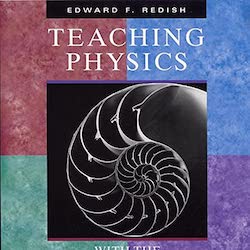
Introduction to research-based teaching in physics (Teaching Physics with the Physics Suite)
December 27, 2023 by Joe Redish, with introduction by Sam McKaganTeaching Physics with the Physics Suite is a book written by Joe Redish, one of the early leaders of physics education research. It was published in 2003 and still provides one of the best introductions to research-based teaching in physics. You can download the entire book in pdf format for free here on PhysPort, or buy it from Wiley.
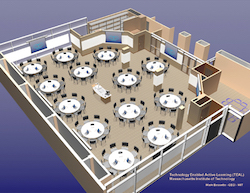
How do I design a SCALE-UP classroom?
September 22, 2017 by Robert Beichner, SCALE-UP developer, and Sam McKagan, PhysPort DirectorSCALE-UP is an integrated learning environment where the physical space is designed to discourage lecture and facilitate interactions between small groups working on short, interesting tasks. SCALE-UP classrooms often look more like a restaurant than a lecture hall. Because these classrooms are so different from traditional classroom settings, designing a SCALE-UP classroom can be a challenge.
SCALE-UP, active learning, classroom design
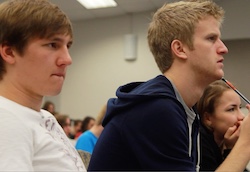
How can I set clear expectations, and motivate students, so that they engage in active learning?
June 20, 2017 by Stephanie Chasteen, University of Colorado BoulderIf you teach using active learning strategies, you may find that students don't automatically engage. Students may just sit back and listen, waiting for their peers to term. Luckily, open resistance is rare. You have the power to impact how students engage with the curriculum and the content.
active learning, expectations, first day of class, productive engagement, student buy-in

How can I help students become more expert learners? Metacognitive strategies for the classroom
June 20, 2017 by Stephanie Chasteen, University of Colorado BoulderStudents may approach coursework from a mechanistic stance: If the instructor gives me information, I will memorize it, and get a good grade. This approach to learning doesn't lend itself well to an active classroom, which requires students to wrestle with difficult ideas in order to lead to deeper conceptual learning.
active learning, metacognition, mastery, productive engagement, student buy-in

How can I create a classroom community, so that students feel encouraged to engage?
June 20, 2017 by Stephanie Chasteen, University of Colorado BoulderIt is challenging for instructors to create and maintain a classroom environment where students are comfortable engaging with each other and sharing their results with the class. This article focuses on creating a supportive and respectful classroom community that welcomes engagement, especially in a classroom using active learning.
active learning, community, productive engagement, student buy-in
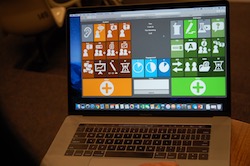
How can I assess the level of student engagement in my class?
June 20, 2017 by Stephanie Chasteen, University of Colorado BoulderInstructors who are attempting active learning are often concerned that students won't like it, or will resist. It can be hard, even in the middle of a course, to gauge how well-engaged students are. This article focuses on ways to assess student engagement, both formally and informally.
assessment, active learning, productive engagement, student buy-in
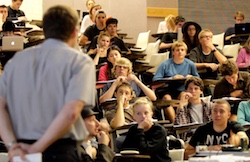
What are some strategies for the first day of class, to set the stage for student engagement?
June 20, 2017 by Stephanie Chasteen, University of Colorado BoulderThe first day is important for setting the class tone. It is especially important if you are using active engagement strategies, since students may not be expecting the energy and risk that an active classroom demands. This article focuses on activities that can be done in an active learning classroom in the first week of class, to increase student engagement throughout the semester.
first day of class, active learning, productive engagement, student buy-in
How can I help students work well in small groups, so they are more likely to engage?
June 20, 2017 by Stephanie Chasteen, University of Colorado BoulderGroups do not always work productively, and not all tasks are suited to group work. Poor group dynamics, or ill-suited tasks, can reduce student engagement. This article focuses on helping students engage productively in active learning classrooms through the type of tasks that are used, and support of productive group dynamics.
cooperative groups, active learning, worksheets, productive engagement
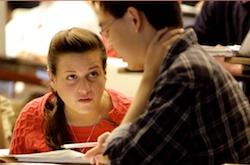
What can I do if students don’t speak up in discussions?
June 20, 2017 by Stephanie Chasteen, University of Colorado BoulderMany active learning techniques require students to discuss their ideas either in small groups or in a large class discussion, but, as you know, students don't always erupt into productive conversation. This article focuses on helping students engage productively in discussions in active learning classrooms.
active learning, discussion, productive engagement, student buy-in
How can I design (or find) a good group activity for physics students?
January 3, 2017 by Joshua Von Korff, Georgia State UniversityI want to give my students something to work on in groups, but what should they work on? I know that researchers have created many physics activities, but I don't know what I'm looking for. What does a good activity look like? OR, I'm really excited about inventing my own labs or worksheets to give students, but I don't know how to design an activity.
active learning, cooperative groups
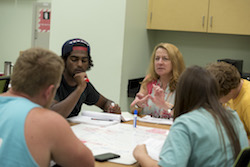
Where can I find good activities for small group discussions?
September 26, 2016 by Sam McKagan, PhysPort directorNearly all research-based teaching methods in physics involve some kind of small group discussions of challenging conceptual activities. Finding good activities is an important component of making small group discussions work in your class. This recommendation includes links to collections where you can find activities to use in your class.
active learning, cooperative groups, SCALE-UP, Peer Instruction, CAE Think-Pair-Share, Technology-Enhanced Formative Assessment, clickers
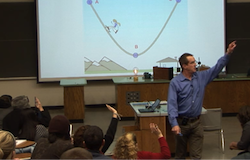
How do I use PhET simulations in my physics class?
June 28, 2016 by Stephanie Chasteen and Yuen-ying CarpenterPhET provides fun, free, interactive, research-based science and mathematics simulations. This post describes why you might want to use PhET, and how other faculty have integrated PhET into undergraduate physics courses -- in lecture, homework, labs, and with inquiry-based activities.
active learning, PhET Interactive Simulations
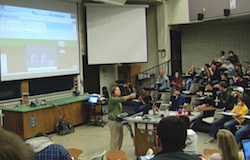
How do I increase student interactivity when using PhET simulations in lecture?
June 28, 2016 by Stephanie Chasteen and Yuen-ying CarpenterPhET simulations are free, online interactive simulations for teaching and learning science. The impact of lecture demonstrations using PhET is greatly increased when students are given the opportunity to interact with the simulations. This article discusses facilitating student discussions, peer instruction, and interactive lecture demonstrations, with PhET.
active learning, PhET Interactive Simulations, lecture, interactive lecture demonstration, peer instruction, clickers

How can I design an effective in-class student worksheet for PhET simulations?
June 28, 2016 by Yuen-ying Carpenter and Stephanie ChasteenPhET simulations are free, online interactive simulations for teaching and learning science. In this document, we will discuss using PhET in a guided worksheet; a strategy which has been found to support student learning. But how do we help students use the questions and the simulation to think about the physics, or to practice new skills – not just focus on getting to the end of the worksheet?
active learning, PhET Interactive Simulations, worksheets, cooperative groups, inquiry
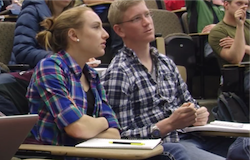
What are some tips for facilitating PhET with in-class worksheets?
June 28, 2016 by Emily Moore and Stephanie ChasteenPhET simulations are free, online interactive simulations for teaching and learning science. Some teachers use the simulations in-class with guided worksheets or labs. This document describes some suggestions for facilitating activities using PhET -- in a class, lab, or recitation -- in order to get your students to engage with PhET activities.
active learning, PhET Interactive Simulations, worksheets, cooperative groups

What are some tips for using PhET in a lab setting?
June 28, 2016 by Stephanie ChasteenPhET simulations are free, online interactive simulations for teaching and learning science. The simulations emphasize visual models, cause-and-effect relationships, and multiple representations. Using PhET in a lab setting has many benefits, such as allowing new possibilities for experiments (such as quantum mechanics), quick repeatability, and making visible the underlying mechanisms.
active learning, PhET Interactive Simulations, laboratory, recitation

What are some tips for using PhET with homework?
June 28, 2016 by Stephanie ChasteenPhET simulations are free, online interactive simulations for teaching and learning science. PhET is ideal for use in homework because the simulations are designed to cue students to explore cause-and-effect relationships, even without an instructor present.
active learning, PhET Interactive Simulations, homework, assessment

How can I train teaching assistants and/or learning assistants?
March 22, 2016 by Sam McKagan, PhysPort DirectorMany research-based teaching methods in physics include activities in which graduate teaching assistants (TAs) and/or undergraduate learning assistants (LAs) facilitate students working in small groups. The success of these methods thus depends heavily on how well TAs and LAs are trained in effective facilitation. Ideally, TAs and LAs should take a course in which they learn about the…
cooperative groups, teaching assistant training, learning assistant training, active learning

Recursos en Español / Research-based teaching resources in Spanish
March 16, 2016 by Sam McKagan, PhysPort DirectorPhysPort es un recurso de internet para apoyar a los profesores de física a utilizar estrategias de enseñanza y evaluación basadas en investigación en sus clases. El sitio es en ingles, pero muchos de los recursos a que se refiere han sido traducido a español. Esta página tiene una lista de recursos para enseñanza y evaluación…
active learning, assessment, español

How can I get students to have productive discussions of clicker questions?
March 15, 2016 by Jenny Knight and Sarah Wise, University of Colorado - BoulderClicker questions are increasingly being used to stimulate student discussion and provide faculty and students with timely feedback. Research suggests that discussing clicker questions can lead to increased student learning, and that students exchanging constructive criticism can generate conceptual change.
What can you do as an instructor to encourage all students to have…
clickers, cooperative groups, active learning, best practices, peer instruction

How do I facilitate Tutorials in Introductory Physics?
March 15, 2016 by Sam McKagan and Stephanie ChasteenTutorials in Introductory Physics are a research-based student activity, developed by the Physics Education Group at the University of Washington (UW). Students work in small groups to complete worksheets based on common student difficulties. Extensive research has demonstrated that Tutorials can improve student learning when implemented properly. Tutorials have been implemented…
Tutorials in Introductory Physics, active learning, cooperative groups, case study

Where can I learn more about research-based teaching in physics?
February 19, 2016 by Sam McKagan, PhysPort DirectorHere is a list of resources where you can learn more about research-based teaching in physics.
physics education research, active learning

Arguments for skeptical colleagues
February 12, 2016 by Sam McKagan, PhysPort DirectorDo your skeptical colleagues question you or ask you to justify your use of research-based teaching methods in physics? This recommendation provides answers to the most frequently asked questions about research-based teaching in physics from your skeptical colleagues.
-What is PER and why should I care?
-What are research-based teaching methods in physics and why should I care?
skeptical colleagues, physics education research, active learning, assessment, problem-solving

Ten results of physics education research that every physics instructor should know
February 11, 2016 by Sam McKagan, PhysPort DirectorThis is a draft outline for an article describing the results of physics education research that are most important for practicing physics instructors to know and apply in their classrooms. We will be publishing the results in installments on PhysPort. The goals of this article are to explain the research behind each result in enough detail that readers can easily understand why…
physics education research, active learning, assessment, problem-solving, beliefs

Which polling method should I use for Peer Instruction?
February 10, 2016 by Sam McKagan, PhysPort DirectorSeveral research-based teaching methods, including Peer Instruction, CAE Think/Pair/Share, and Technology-Enhanced Formative Assessment, involve asking students to discuss and answer multiple-choice conceptual questions in class. There are at least three methods of collecting students’ answers to these questions: clickers, flashcards, and show of hands. Lasry…
clickers, flashcards, Peer Instruction, CAE Think-Pair-Share, Technology-Enhanced Formative Assessment, active learning

What makes research-based teaching methods in physics work?
February 10, 2016 by Sam McKagan, PhysPort DirectorPhysPort contains guides to over 50 "PER-based teaching methods," also known as "interactive engagement" or "active learning" methods. We use "teaching method" in the broadest possible sense, to include curricula, techniques, resources, tools, and reform strategies. To implement these methods effectively, it is helpful to understand the essential features that make them work.

Best practices for facilitating Periscope lessons for TA/LA training or faculty PD
February 10, 2016 by Rachel Scherr, creator of PeriscopePeriscope connects authentic video episodes from best-practices physics classrooms to big questions of teaching and learning. Periscope lessons are useful if you:
-supervise learning assistants (LAs) or teaching assistants (TAs)
-lead faculty development
-seek to improve physics teaching in your department
-want to improve your own physics teaching
Periscope, teaching assistant training, learning assistant training, faculty professional development, active learning, cooperative groups, best practices
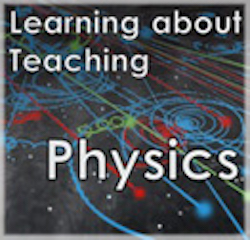
Learning About Teaching Physics Podcasts
July 9, 2012 by Michael Fuchs and Stephanie ChasteenWe're getting the physics education research out of those stuffy journals and into your hands (or, rather, ears) with this little audio podcast. Co-hosted by veteran high school physics teacher Michael Fuchs and physicist and education researcher Stephanie Chasteen, each episode investigates a piece of the research literature and how it can relate to your classroom.
active learning, physics education research, lecture, learning styles, clickers, Peer Instruction, CAE Think-Pair-Share, demonstrations



